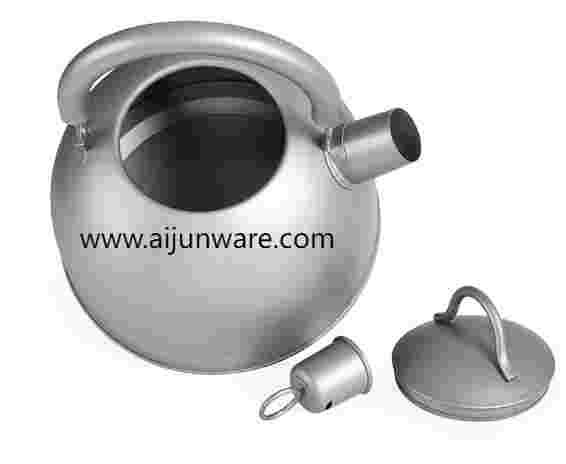Ultralight thru hikers chase simplicity and every ounce saved matters, so choosing the right Camping Water Pot becomes a pivotal decision when miles and days stretch ahead. As trail traffic rises and extreme heat events push hikers to rethink water strategies, the pot you carry must balance weight with durability and real world versatility. This guide unpacks trade offs and practical choices for hikers who want to move light while staying safe and fed on long routes.
Light versus durable is the central tension. Materials define that trade off. Titanium offers a striking weight advantage and resists corrosion while taking hard knocks without cracking. Aluminum tends to heat quickly and weigh little while offering forgiving durability and a lower price point. Hard anodized aluminum brings extra surface resilience but may add a touch of mass. Think in terms of how the metal behaves when dropped on rock and how easy it is to clean after greasy meals.
Capacity plays into that balance too. A pot sized for only boiling water and making simple meals slashes carried weight but limits options when you want to cook a rehydrated meal for morale or to wash up quickly. A slightly larger pot that doubles as a serving bowl reduces the number of pieces you carry and can be a sensible middle ground. Consider whether you need to simmer stews or merely bring water to a rolling boil for hydration and rehydration packets.
Multi functional versus dedicated gear is another decision point. A combined pot and cup that nests neatly with a minimal stove saves space and reduces pack real estate. Some hikers favor a single pot that can also double as a coffee press and a drinking mug. Others carry a tiny dedicated cup for sipping while keeping the pot solely for boiling. The more tasks a single item reliably performs the fewer spare parts you need to manage on the trail.
Think accessories as part of the total weight picture. A lid that seals helps boil faster and reduces fuel usage, while a lightweight handle or bail that folds snugly improves carrying comfort. A compact stuff sack or cozy can reduce rattling and protect the pot inside a pack. Each small item adds grams but can also reduce friction during packing and use so choose additions that provide clear value during long days.
A realistic ultralight checklist centers on what you actually use every day. If your menu leans heavy on ready to eat items and fuel is precious, a pot devoted to water boiling and sterilization might be the right call. If you value hot breakfasts and a proper evening meal to sustain morale, a pot that holds a little more volume is worth the trade off. Also factor in how many people you share meals with on the trail. A solo itinerary calls for a different solution than a pair who split gear.
When to leave the pot at home is a strategic choice. On routes with abundant clean refill options and when you prefer cold meals a lightweight meal plan without a pot reduces load. Days that prioritize speed and distance often favor dry food with no cooking, while technical sections or early starts where hot drinks really help morale may push you to carry a compact boiling system. Making that decision is about matching food plan to route and expected resupply.
Maintenance and repair matter in remote settings. Look for a pot with simple geometry and an interior finish that resists food cling so you can clean it with minimal water. Pots that accept simple field repairs and that resist denting extend service life and reduce the hassle of scavenging repairs in towns. A durable finish also helps prevent chemical reactions when acidic foods are on the menu.
Packing strategy affects comfort. Nest items like a minimal stove, fuel canister or tubing, and a small cup inside the pot to maximize space. Keep fragile items shielded and store the pot where it's easy to access for quick water top offs. Consider how often you will boil each day and whether you want a cooking rhythm that requires multiple small boils or fewer larger boils. Fuel efficiency and a good lid make the latter scenario more likely.
Finally, practice at home with your chosen setup before you head out. Time to boil, ease of cleaning, and how the pot handles when hot are all things you want to understand without wind and rain. Trail tested familiarity helps you refine choices and avoid carrying gear that doesn't suit your style.
Ultralight kits are a set of trade offs not a single right answer. The right Camping Water Pot for thru hiking is the one that fits your food plan your resilience margin and your willingness to trade weight for cooking flexibility. When you want cookware that answers the needs of extended walking with smart material choices and practical features check the outdoor cookware selection at the product area and visit www.aijunware.com/product/ .




